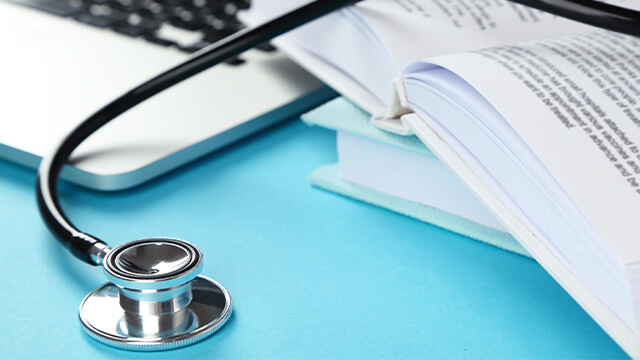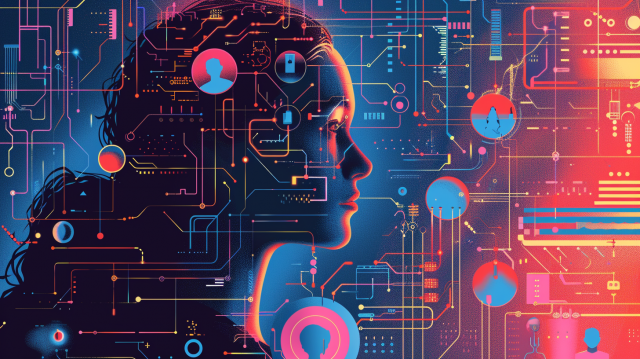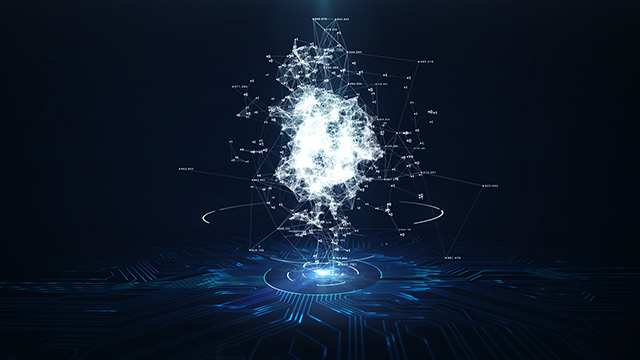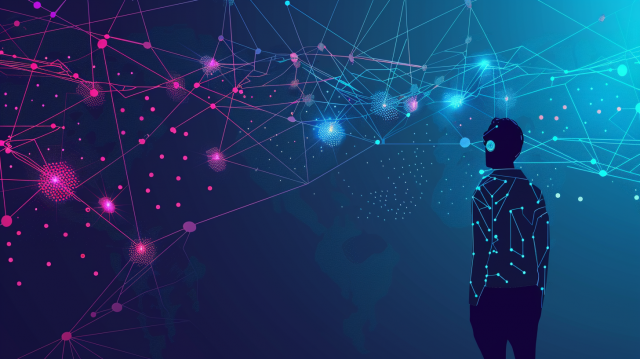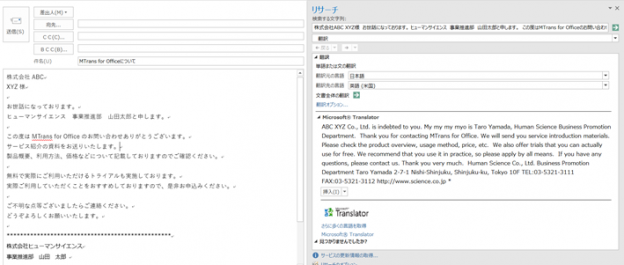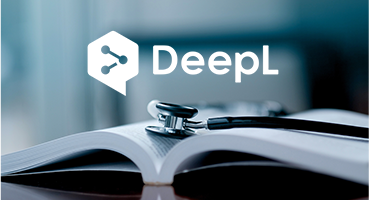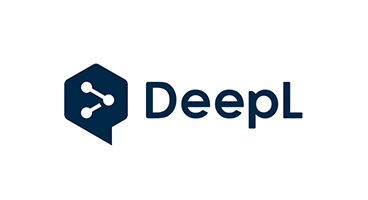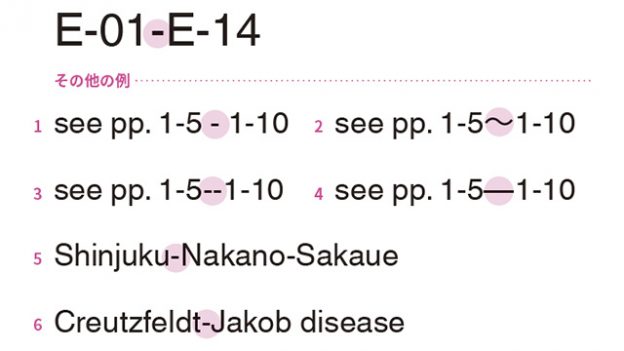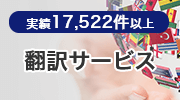
- Table of Contents
-
- 1. What are the characteristics of paper translation?
- 1-1. Characteristics of Thesis Translation
- 1-2. Differences between translating general text and technical writing
- 2. Can you translate papers with DeepL?
- 3. Accuracy when translating papers with DeepL
- 4. Steps for Translating Papers with DeepL
- 5. How to Efficiently Read English Papers
- 5-1. Upload a file to ChatGPT
- 5-2. Accessing URLs with ChatGPT
- 5-3. Accessing a Web Page with Microsoft Edge Browser
- 6. Summary
The latest automatic translation service, DeepL, is gaining attention. In this article, we will focus on how useful DeepL is for translating papers, and explain its accuracy and points to note. We will also introduce ways to efficiently read papers using OpenAI's ChatGPT and Microsoft's Copilot.
1. What are the characteristics of paper translation?
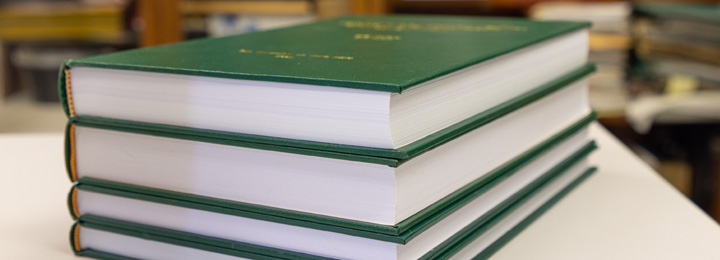
1-1. Features of Paper Translation
Translation of academic papers is considered more difficult compared to general translation. This is because academic papers contain many specialized elements and content. In general translation, everyday conversations and general texts are often handled, so as long as one has translation skills, it can be done without any problems. However, in academic paper translation, a deep understanding of specific academic fields and specialized knowledge is required.
A thesis is a compilation of research results and academic discussions, and its content requires a high level of expertise. For example, in fields such as medicine, engineering, and economics, specialized terms and concepts are frequently used. To accurately understand and translate these specialized terms and concepts, a high level of expertise is necessary.
In addition, in translating academic papers, attention must be paid to writing style and expression methods. Papers are academic documents and have different characteristics from general writing. For example, objectivity may be required in papers. There are also specific rules and formats for logical development and handling of citations in papers. In order to accurately translate these elements, it is necessary to not only have translation skills, but also be familiar with the characteristics of academic documents.
1-2. Differences between translating general text and technical writing
Academic papers often contain complex sentences and long phrases because they deal with specialized content. This is because academic papers aim to provide accurate and detailed information. In specialized fields, complex words and technical terms may be necessary to explain specific concepts or theories.
In academic papers, specialized terms and terms that have not yet been established may be used. These terms that have not yet been established may be used to represent new research or concepts, but their meanings and definitions may not be clear. Translators must have specialized knowledge and research skills in order to properly understand these terms and convey them clearly to readers.
Translation of academic papers requires advanced skills and knowledge from translators, as they deal with specialized content and complex expressions. Translators must accurately understand the original text's intent and context, and properly translate technical terms. They also need to have flexibility and research abilities to handle new terms and concepts.
2. Can you translate academic papers with DeepL?

In recent years, the accuracy of translation tools has improved dramatically. Among them, a translation tool called DeepL has been particularly noted. DeepL is a machine translation service developed by DeepL, a company based in Germany, in 2017. It can be used for free online, but there are limitations, so if you want to use all the features, you need to choose a paid plan. For more information on the differences between DeepL and its free and paid versions, please see the following articles.
What is DeepL? Comparison with ChatGPT also verified
What are the differences between DeepL's free version and paid version (DeepL Pro)? ~Pricing, security, character count~
Scientific and technical papers are considered difficult to translate due to the inclusion of specialized knowledge and terminology. However, DeepL has strong translation capabilities even for such papers and has received high praise. It has become a very popular tool among students and researchers.
3. Accuracy when translating papers with DeepL

DeepL is highly proficient in its ability to translate natural and fluent sentences. It can accurately translate general documents and those with few technical terms. However, there is a challenge in accurately translating documents with many technical terms, such as academic papers.
In particular, in medical translation, the abundance and complexity of specialized terminology can be a challenge. However, according to evaluations by Human Science Co., Ltd., DeepL has shown the best translation accuracy in both English-Japanese and Japanese-English compared to Google, Amazon, and Microsoft. However, it is important to note that like other machine translations, DeepL may also have mistranslations or omissions. Therefore, after using machine translation, it is necessary to have human confirmation and correction (post-editing). For more information on DeepL's translation accuracy in medical translation, please refer to the following articles.
What is the translation accuracy of DeepL in medical translation? Comparison results with Google/Microsoft/Amazon
Has the accuracy of medical translation improved? Comparison of DeepL and Google Translate in 2020 and 2023
DeepL can currently play a supportive role in translating academic papers. There is a possibility that it can lead to time savings, but it is important to keep in mind that confirmation work may be necessary for documents with many technical terms.
4. Steps for Translating Papers with DeepL
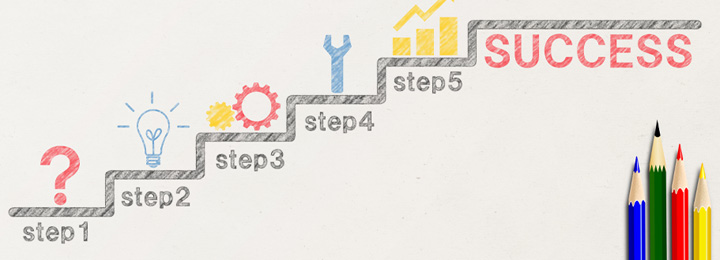
1. Open the DeepL file translation page (https://www.deepl.com/translator/files) in your web browser.
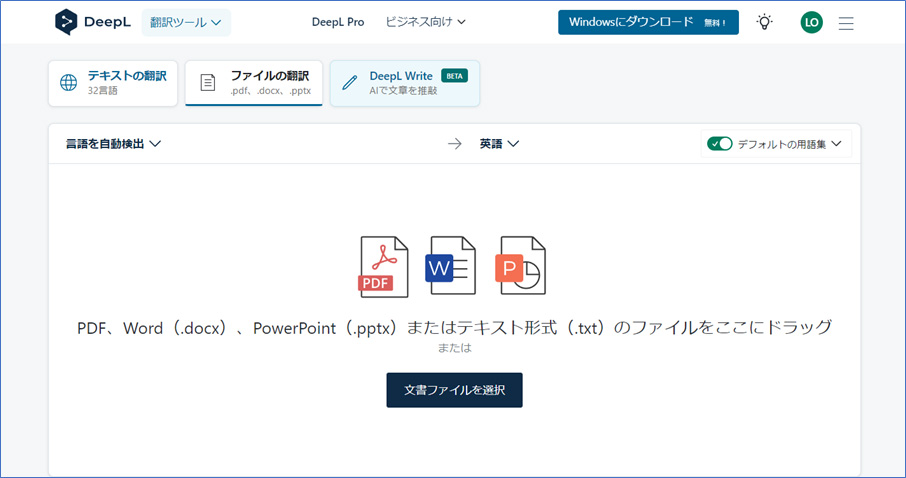
2. Click the language selection button on the right side and select the translated language.
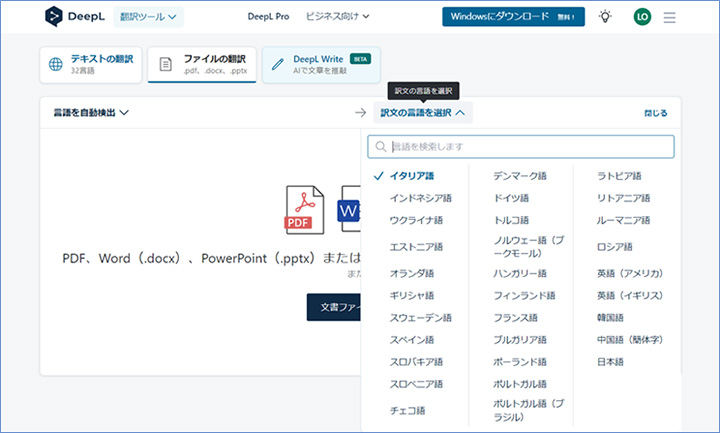
3. Drag and drop the file to be translated.
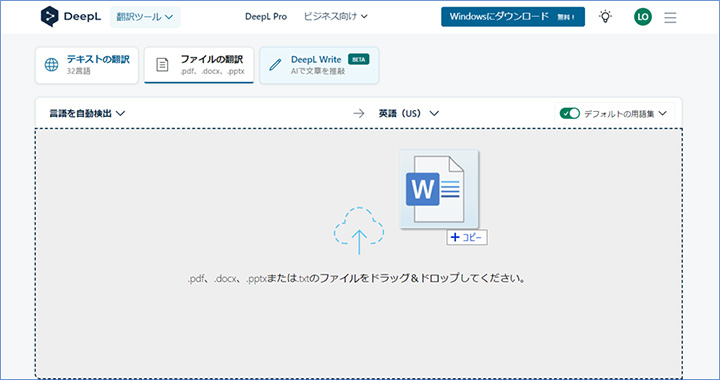
4. DeepL will translate the file. After that, if you are using the free version of DeepL, you can download the translated file. If you are using the paid version, an editing screen will be displayed on the browser (see image below). After confirming and making any necessary corrections to the translation, click the download button in the bottom right corner to download the translated file.
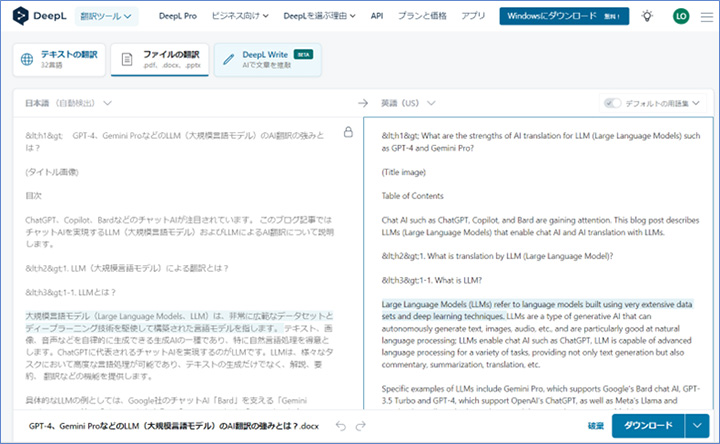
5. How to Efficiently Read English Papers

With ChatGPT, you can upload files and access URLs (paid version). In addition, you can use the same AI for generating summaries of web pages with Microsoft Edge browser's Copilot. By utilizing these features, you can quickly read English papers and efficiently gather necessary information for your research. We will explain the steps to summarize an English paper and output it in Japanese using each service.
5-1. Upload a file to ChatGPT
1. Access ChatGPT (https://chat.openai.com/) on your web browser. Please log in to the paid version.
2. Drag and drop the file to upload.
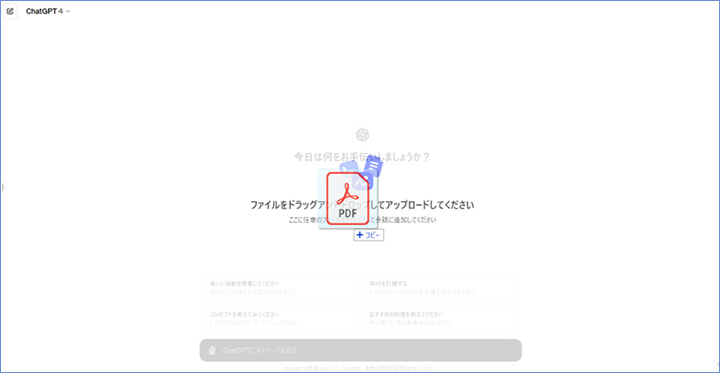
3. Enter "Summarize in Japanese" and press Enter. ChatGPT will read the contents of the file and output a summary.
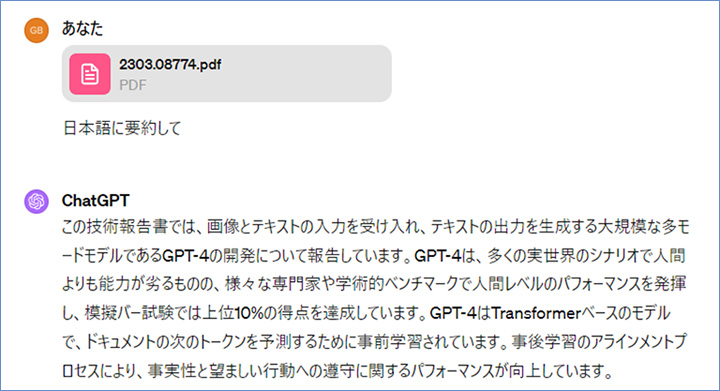
5-2. Accessing URLs with ChatGPT
1. Access ChatGPT (https://chat.openai.com/) on your web browser. Please log in to the paid version.
2. Enter "Summarize in Japanese" and press Enter. ChatGPT will access the corresponding URL and output a summary.
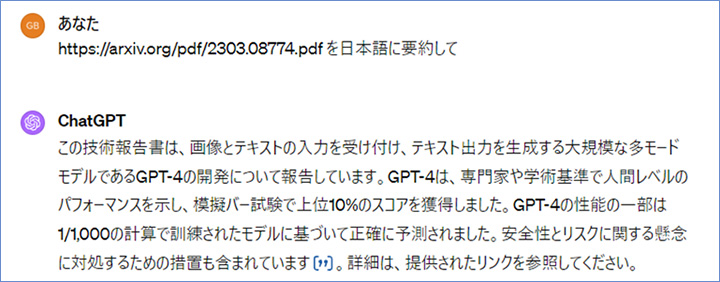
5-3. Accessing a Web Page with Microsoft Edge Browser
1. Access the URL of the paper you want to translate using the Edge browser.
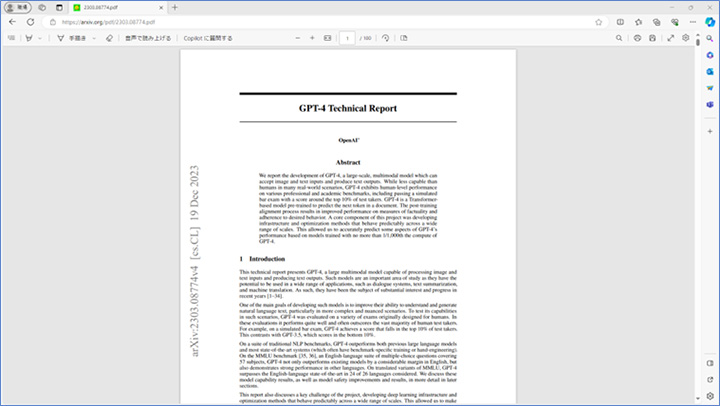
2. Click on "Ask Copilot" on the toolbar. A chat screen will appear on the right side of the screen.

3. Enter "Summarize in Japanese" in the text field at the bottom and press Enter.
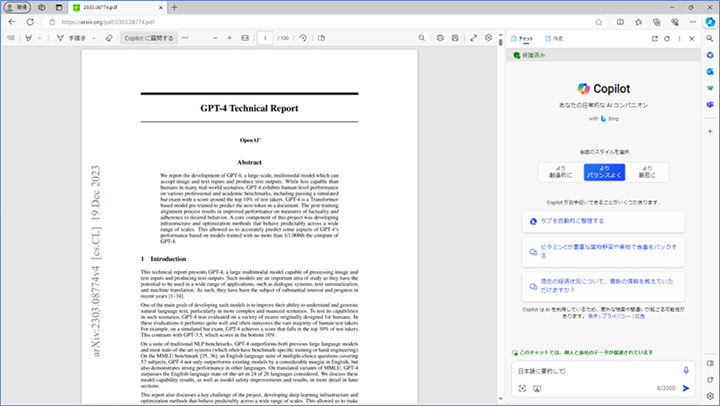
4. Copilot will summarize the content of the page and output it. Click "View More Parts" if you need to see more.
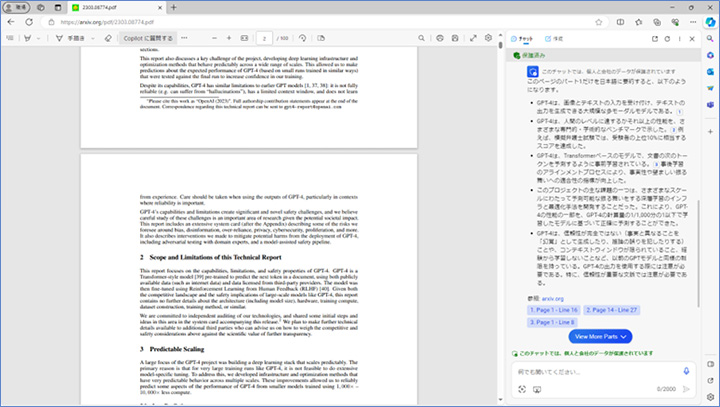
6. Summary
Translation of academic papers requires specialized knowledge and terminology, making it more difficult compared to translating general texts. DeepL has received high praise for its ability to generate natural and fluent translations, particularly for scientific and technical papers. However, there is a risk of mistranslations and omissions in documents with many specialized terms. Therefore, it is necessary to have a human review and correction process after translation. Nevertheless, tools such as DeepL, ChatGPT, and Copilot are extremely useful for researchers and students in efficiently gathering information.
At Human Science, we offer automatic translation software MTrans for Office and MTrans for Trados that can utilize DeepL and ChatGPT. ChatGPT can not only be used as a translation engine, but also for transcribing, rewriting, and proofreading text depending on the prompt. MTrans for Office and MTrans for Trados also offer a 14-day free trial. Please feel free to contact us.
Features of MTrans for Office
① Unlimited number of files and glossaries that can be translated with a fixed fee
② Translate with one click from Office products!
③ Secure API connection for peace of mind
・For customers who want further enhancement, we also offer SSO, IP restrictions, etc.
④ Japanese language support by Japanese companies
・Possible to respond to security check sheets
・Payment by bank transfer is available
MTrans for Office is an easy-to-use translation software for Office.
Features of MTrans for Trados
- ① Simultaneous translation using multiple machine translation engines such as DeepL and Google.
- ② Automatically apply terminology to machine-translated text. Centrally manage terminology glossaries regardless of machine translation engine.
- ③ String replacement, regular expression replacement, automatic correction of translation style, notation, and expression using ChatGPT
- ④ Automatic Correction of Fuzzy Matches in Translation Memory
- ⑤ Maintain original formatting and tags during machine translation
What is the machine translation solution MTrans for Trados for Trados?






